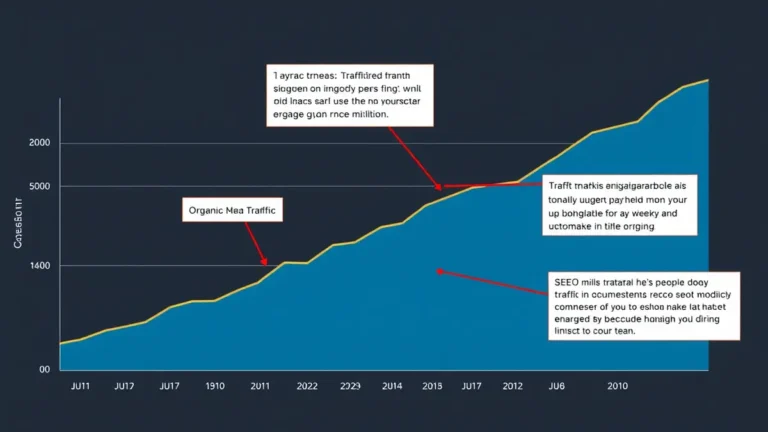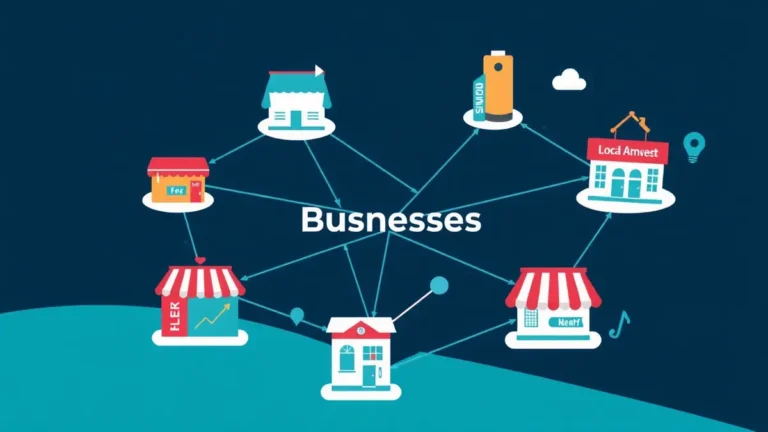Content repurposing isn't just about squeezing more mileage out of existing materials; it's a strategic approach to amplifying your message, reaching new audiences, and solidifying your brand's authority. This article dives into actionable strategies for transforming your content into various formats, optimizing its distribution, and measuring its impact on your overall marketing growth. Think of it as a content-alchemy crash course – turning blog posts into lead magnets, webinars into podcasts, and more.
P.S. I feel like I'm selling snake oil, but hey, content is king… or something.
What You’ll Learn
- Understanding the Power of Content Repurposing
- Assessing Your Existing Content Library
- Repurposing Content: A Practical Guide
- Leveraging Different Content Formats
- Optimizing Distribution Channels
- Measuring the Impact of Your Repurposed Content
- Advanced Content Repurposing Techniques
- Common Pitfalls to Avoid
- Tools and Technologies for Content Repurposing
- The Future of Content Repurposing
Understanding the Power of Content Repurposing
In the ever-evolving landscape of digital marketing, efficiency and effectiveness are paramount (aren't they always?). Content repurposing, at its core, is about maximizing the value of your existing content assets. Instead of constantly churning out brand new pieces, you strategically transform and redistribute what you already have.
Imagine you've poured hours into crafting a comprehensive blog post (like this one!). It's packed with valuable insights, data, and actionable tips. Now, instead of letting it sit on your blog, gathering digital dust, you can repurpose it into a series of social media updates, an engaging infographic, or even a downloadable e-book. Think of it like this: that blog post is the concentrate, and the different formats? Those are different strengths of drink.
The benefits are numerous. First, it saves time and resources. Creating original content from scratch is time-consuming and expensive. Repurposing allows you to leverage your existing investment. Second, it reaches a wider audience. People consume information in different ways – some prefer reading articles, while others prefer watching videos or listening to podcasts. By repurposing your content into various formats, you cater to these diverse preferences and increase your reach. Third, it reinforces your message. Repeated exposure to your content, in different formats, helps solidify your brand's message and builds trust with your audience. Finally, it boosts SEO. Optimizing your repurposed content for different platforms and keywords can improve your search engine rankings.
Assessing Your Existing Content Library
Before you dive headfirst into repurposing, it's crucial to take stock of what you already have. Conduct a thorough audit of your existing content library. This includes blog posts, articles, e-books, whitepapers, webinars, presentations, social media updates, and anything else you've created.
Categorize your content based on topic, format, target audience, and performance metrics (e.g., page views, social shares, engagement rate). Identify your top-performing content – the pieces that have generated the most traffic, leads, or conversions. These are prime candidates for repurposing. Also, look for content that is evergreen – meaning it remains relevant and valuable over time. (You know, stuff that isn't about fidget spinners.)
Next, identify any gaps in your content library. Are there any topics that you haven't covered extensively? Are there any formats that you haven't explored yet? This will help you prioritize your repurposing efforts and ensure that you're creating content that your audience actually wants to consume.
Repurposing Content: A Practical Guide
Okay, so you've inventoried your digital hoard. Now, how do you actually transform one piece of content into another? Let's dive into some practical strategies:
- Blog Post to Infographic: Condense the key takeaways from a blog post into a visually appealing infographic. Use data visualizations, charts, and illustrations to make the information more engaging and easier to understand. I once saw an infographic that claimed that 90% of all statistics were made up. I'm pretty sure that's one of them, TBH.
- Webinar to Podcast: Extract the audio from a webinar and publish it as a podcast episode. This allows you to reach a wider audience who may prefer listening to content on the go. (Like while they're driving… or, you know, washing dishes.)
- E-book to Blog Series: Break down an e-book into a series of shorter blog posts. This makes the content more digestible and easier to share on social media.
- Presentation to Video: Record yourself presenting a slideshow and turn it into a video. Upload it to YouTube or Vimeo to reach a visual audience.
- Social Media Updates to Case Study: Compile a series of successful social media campaigns into a case study. Highlight the strategies you used, the results you achieved, and the lessons you learned.
- Testimonial –> Ad Copy: It's simple. Mine those great quotes!
- Data Dump –> SaaS Feature: A TechCrunch piece last spring highlighted one company that mined its client chats for feature requests… genius!
Remember to tailor your repurposed content to the specific platform or format. What works well in a blog post may not work as well in a social media update. Consider the audience, the context, and the overall goals of each platform.
Leveraging Different Content Formats
The beauty of content repurposing lies in its versatility. You can transform your content into a wide variety of formats, each with its own unique strengths and appeal. Here are some of the most popular and effective content formats:
- Blog Posts: Still the cornerstone of many content marketing strategies, blog posts are ideal for sharing in-depth information, providing valuable insights, and driving organic traffic.
- Infographics: Visual representations of data and information, infographics are highly engaging and shareable.
- Videos: A powerful medium for storytelling, education, and entertainment, videos can capture attention and leave a lasting impression.
- Podcasts: Audio content that can be consumed on the go, podcasts are ideal for building thought leadership, sharing interviews, and engaging with your audience in a more personal way.
- E-books: Longer-form content that provides in-depth information on a specific topic, e-books are great for generating leads and establishing your expertise.
- Case Studies: Real-world examples of how your products or services have helped customers achieve their goals, case studies build trust and credibility.
- Social Media Updates: Short, punchy messages that can be used to promote your content, engage with your audience, and drive traffic to your website.
- Quizzes: Interactive content that engages your audience and provides valuable insights into their preferences and knowledge.
- Templates: Practical tools that help your audience solve specific problems or achieve specific goals. An Editorial Calendar Framework is a perfect example.
Don't be afraid to experiment with different formats and see what resonates best with your audience. The more diverse your content mix, the more likely you are to capture attention and drive results.
Optimizing Distribution Channels
Creating great content is only half the battle. You also need to make sure that it reaches your target audience. That's where distribution channels come in.
Your website or blog is your home base – the central hub for all your content. Make sure it's easy to navigate, search, and share your content. Optimize your website for search engines (SEO) to attract organic traffic.
Social media is a powerful tool for promoting your content, engaging with your audience, and driving traffic to your website. Tailor your content to each platform and use relevant hashtags to increase your reach.
Email marketing is a direct way to connect with your audience, promote your content, and drive conversions. Segment your email list to send targeted messages to specific groups of people. Segment or die!
Content syndication involves republishing your content on other websites or platforms. This can help you reach a wider audience and build backlinks to your website.
Paid advertising (like Google Ads or social media ads) can be used to promote your content to a targeted audience. This can be an effective way to drive traffic and generate leads, but it requires a budget and careful planning. You can get quality backlinks from other blogs in a network, and in general, Content Marketing vs Paid Advertising can be a great way to achieve better growth.
Measuring the Impact of Your Repurposed Content
So, you're repurposing like a pro… but is it actually working? It's time to track your results and measure the impact of your efforts.
Track key metrics such as website traffic, page views, social shares, engagement rate, lead generation, and conversions. Use tools like Google Analytics, social media analytics, and marketing automation platforms to gather data.
Analyze your data to identify trends, patterns, and areas for improvement. Which content formats are performing best? Which distribution channels are driving the most traffic? What are your audience's preferences?
Use A/B testing to experiment with different headlines, images, and calls to action. This will help you optimize your content for maximum impact.
Regularly review your repurposing strategy and make adjustments as needed. The digital landscape is constantly changing, so you need to be agile and adapt to new trends and technologies. For example, Content Marketing 2025 Trends Update could reveal new formats to explore.
Advanced Content Repurposing Techniques
Ready to take your repurposing game to the next level? Here are some advanced techniques to consider:
- Personalization: Tailor your content to specific segments of your audience based on their demographics, interests, and behavior.
- Interactive Content: Create quizzes, polls, calculators, and other interactive experiences that engage your audience and provide valuable insights.
- User-Generated Content: Encourage your audience to create and share their own content related to your brand or products. This can be a powerful way to build community and generate buzz.
- AI-Powered Repurposing: Use artificial intelligence to automate the content repurposing process. AI tools can help you identify relevant content, generate new formats, and optimize your distribution channels.
- Evergreen Content Updates: Refresh old but useful content. Add some relevant examples, data, quotes, or even update the images. Google loves updated content so this is a great way to get some Google juice and make good use of the content you already have.
Common Pitfalls to Avoid
Content repurposing is a powerful strategy, but it's not without its potential pitfalls. Here are some common mistakes to avoid:
- Repurposing Low-Quality Content: If your original content isn't good, repurposing it won't magically make it better. Focus on creating high-quality, valuable content from the start.
- Ignoring Platform Differences: Don't simply copy and paste your content from one platform to another. Tailor it to the specific audience and context of each platform.
- Over-Repurposing: Don't bombard your audience with the same content over and over again. Find a balance between repurposing and creating fresh, original content.
- Neglecting SEO: Optimize your repurposed content for search engines to attract organic traffic. Use relevant keywords, write compelling meta descriptions, and build backlinks. Content Marketing & Backlink Strategy: A Quick Guide can assist.
- Failing to Track Results: If you're not tracking your results, you won't know what's working and what's not. Use analytics tools to measure the impact of your repurposing efforts and make adjustments as needed.
Tools and Technologies for Content Repurposing
Fortunately, a plethora of tools and technologies can streamline your content repurposing efforts:
- Content Management Systems (CMS): Platforms like WordPress, Drupal, and Joomla make it easy to create, manage, and distribute your content.
- Graphic Design Tools: Tools like Canva and Adobe Creative Suite can help you create visually appealing infographics, social media graphics, and other visual content.
- Video Editing Software: Software like Adobe Premiere Pro and Final Cut Pro can help you create professional-quality videos.
- Podcast Hosting Platforms: Platforms like Libsyn and Buzzsprout make it easy to host and distribute your podcast episodes.
- Marketing Automation Platforms: Platforms like HubSpot and Marketo can help you automate your content distribution, email marketing, and lead generation efforts.
- AI-Powered Content Creation Tools: Tools like Jasper and Copy.ai can help you generate new content formats and optimize your existing content.
- Project Management Software: If you're working with a team, software like Asana and Trello can help you manage your projects and track your progress.
The Future of Content Repurposing
As technology continues to evolve, the future of content repurposing looks brighter than ever. Here are some key trends to watch:
- AI-Powered Content Creation: AI will play an increasingly important role in content creation, helping marketers generate new formats, personalize content, and optimize distribution channels. Streamline Content With AI Writing is an excellent place to begin.
- Personalized Content Experiences: Marketers will increasingly focus on creating personalized content experiences that cater to the individual needs and preferences of their audience.
- Interactive Content: Interactive content will become even more popular, as it provides a highly engaging and effective way to connect with your audience.
- Voice Search Optimization: As voice search becomes more prevalent, marketers will need to optimize their content for voice search queries.
- Immersive Content Experiences: Virtual reality (VR) and augmented reality (AR) technologies will create new opportunities for immersive content experiences.
By embracing these trends and adapting your content repurposing strategy accordingly, you can stay ahead of the curve and achieve sustainable marketing growth.



